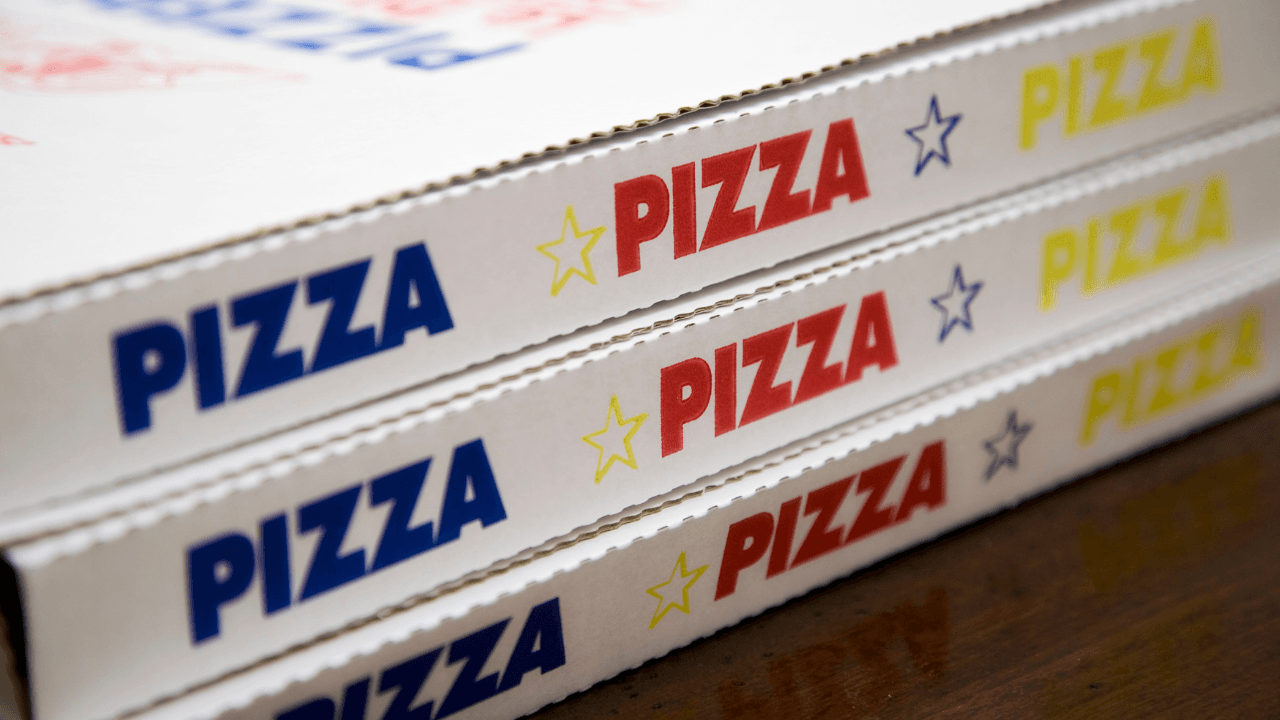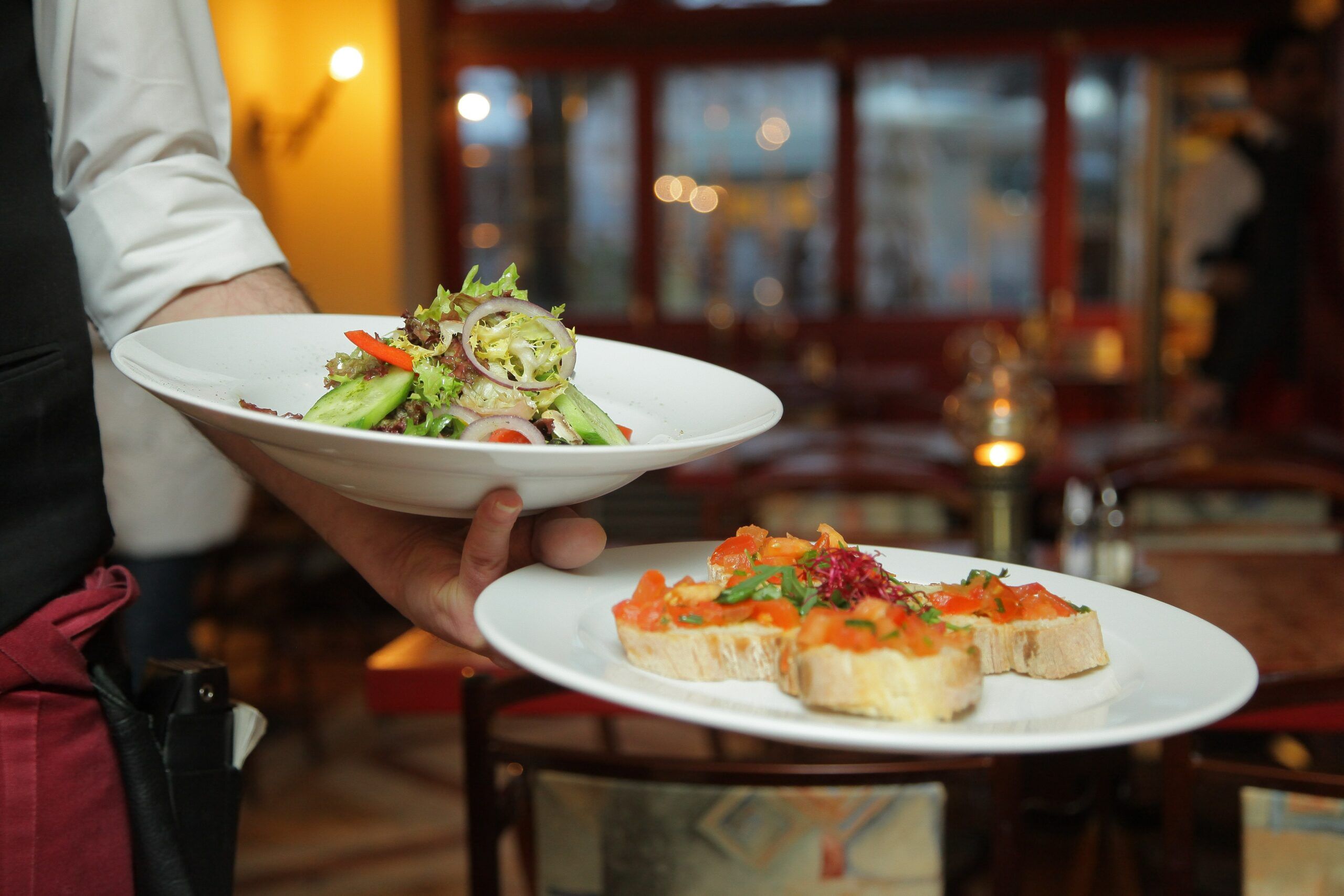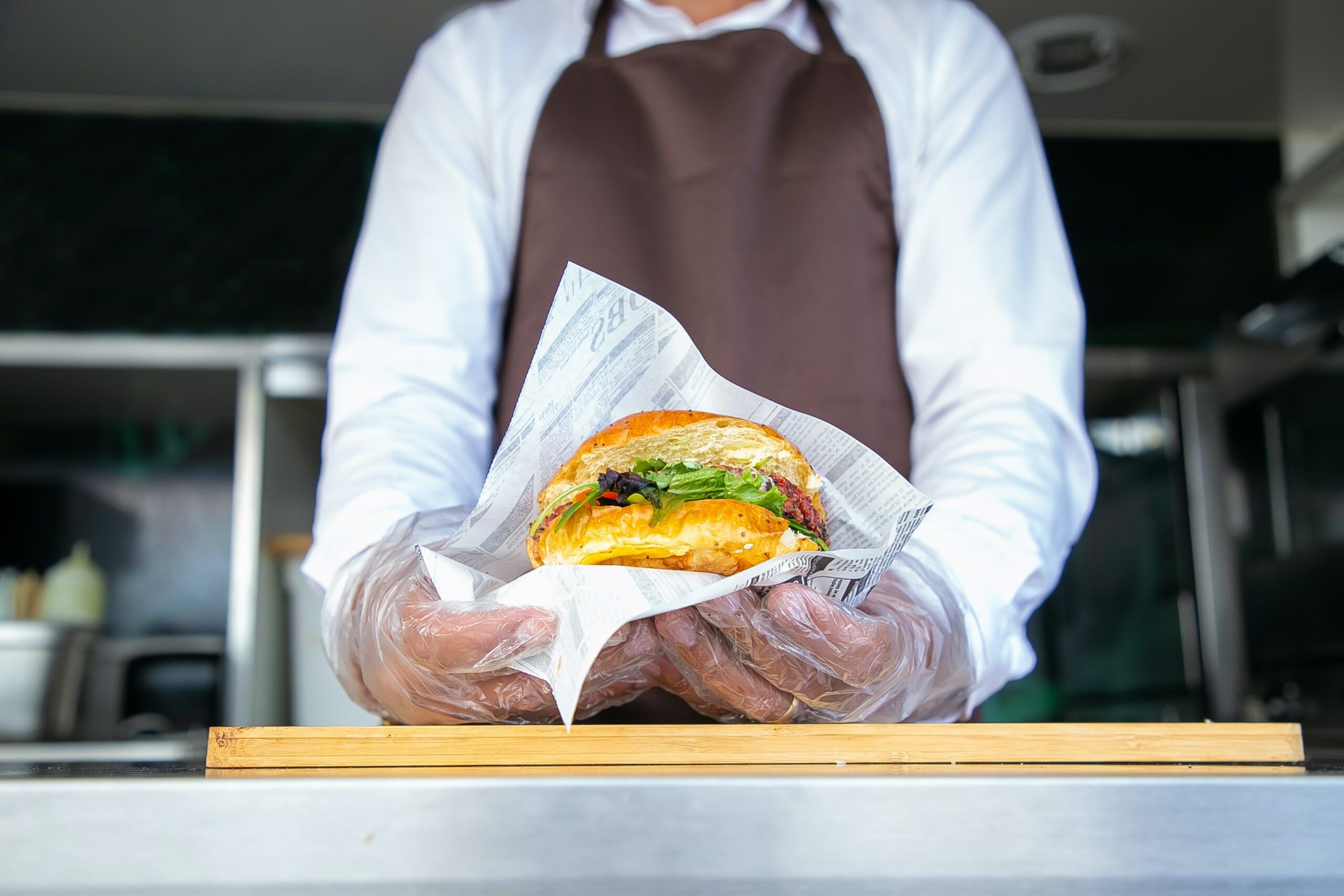Did you know that 93% of Americans enjoy pizza at least once a month?
This is how ingrained pizza is in American culture and how tremendous the opportunity is for those looking to start a pizza shop.
In this blog post, we aim to provide a straightforward guide to understand how to start a pizza business and run it successfully.
We’ll cover key components from planning and setting up your independent pizza shop to sourcing quality ingredients and effectively marketing your offerings.
Understanding the Pizza Market
Let’s see what’s going on in the pizza market.
The global pizza market was valued at approximately $148.6 billion in 2023. It’s expected to grow to about $222.5 billion by 2032.
The pizza industry is constantly growing because of its ability to innovate in flavors and improve customer experiences through convenience and personalization.
Innovations such as Artificial Intelligence (AI) simplify operations and improve customer interactions.
This focus on innovation attracts new customers and retains existing ones by offering unique and customizable dining options.
Additionally, pizza’s global popularity as a versatile and beloved food choice continues to drive demand across diverse markets and demographics, contributing to its sustained growth worldwide.
Flavor and Ingredient Trends
Pizza makers are innovating with flavors and ingredients to keep customers excited. Here are some trends:
- Twisting Tradition: Putting new spins on classic flavors keeps things interesting with little risk.
- Global Spice Fusion: Combining spicy and sweet flavors from around the world for a unique taste experience.
- Nostalgic Reimagining: Bringing back favorite flavors in new ways to evoke fond memories.
- Flavorful Playfulness: Layering different flavors and textures to create engaging and enjoyable eating experiences.
These trends are shaping the future of pizza, offering customers more variety and excitement with every bite.
Fastest-Growing Sauces Paired with Pizza
Certain sauces are becoming increasingly popular with pizza lovers:
- Hot Honey: Adds a blend of sweet and spicy.
- Honey BBQ: Sweet and tangy, enhancing barbecue flavors.
- Balsamic Reduction: Adds a rich, sweet depth to pizzas.
- Chile Sauce: Brings heat and flavor to complement various toppings.
Types of Pizza Businesses
There are different ways to run a pizza shop. Each has advantages and appeals to different customer preferences, making the pizza business diverse and adaptable to various market demands.
- Traditional Pizzeria: A dine-in restaurant where customers enjoy pizzas freshly baked in a traditional oven. It offers a cozy atmosphere for families and friends to dine together.
- Takeout and Delivery: These pizza shops focus on preparing pizzas for customers to take home or delivering them hot and fresh to their doorsteps. They often rely on efficient delivery systems to ensure timely service.
- Food Truck or Mobile Pizza: These are mobile pizza shops that bring the oven to events, festivals, or street corners, offering a convenient and unique dining experience on the go.
- Gourmet Pizza: These shops specialize in high-quality ingredients and creative toppings, appealing to customers looking for a more upscale pizza dining experience.
Starting a Pizza Business
Starting a pizza business is filled with endless possibilities. Let’s see what you need for that.
Pizza Shop Business Plan and Strategy
Starting a pizza business requires a solid roadmap to success—a detailed business plan is your guide.
A business plan helps you define your objectives, whether it’s expanding your pizza shop business or opening multiple locations.
You must conduct market research to identify your target audience and competition. This insight guides your pricing, menu offerings, and marketing strategies.
Then comes financial planning: outline your startup costs, operating expenses, and revenue projections. This will prepare you for potential challenges and help you attract investors or secure loans.
Choosing a Niche
You must have something unique to offer or a niche market to differentiate your pizza business in a competitive market. Consider these strategies:
- Specialty Pizzas: Offer unique toppings or styles that set you apart, such as gourmet ingredients or regional flavors.
- Customer Experience: Focus on exceptional service, ambiance, or a distinct theme that connects with your target customers.
- Health and Dietary Preferences: Cater to dietary needs like gluten-free or vegan options to attract health-conscious consumers.
Selecting the Right Location
Consider these essential factors:
- Foot Traffic: Ensure your location attracts a steady flow of pedestrians or vehicle traffic. This can significantly impact your visibility and customer base.
- Demographics: Understand the area’s demographics—age, income level, and preferences. Tailor your menu and marketing strategies accordingly to meet local demand.
- Competition: Assess nearby pizza shops and other eateries. A moderate level of competition suggests that the area is popular for dining, indicating a steady flow of customers likely to frequent various eateries, including your new pizza shop.
Designing the Layout and Ambiance
When preparing to open a pizza shop, creating a welcoming and functional environment is key to attracting and retaining customers. Here are some pizzeria design ideas:
- Plan Your Layout: Efficient layout design is crucial when opening a pizza shop. Start with the kitchen, ensuring it has enough preparation, cooking, and storage space. The layout should allow your staff to move easily and work efficiently. The dining area should be spacious and comfortable, with tables and seating accommodating various group sizes. Think about the flow of movement from the entrance to the seating area, and ensure that it feels natural and unobstructed.
- Set the Ambiance: The ambiance of your pizzeria sets the tone for the customer experience. You can choose a cozy, family-friendly atmosphere or a trendy, modern vibe, your decor, lighting, and music should all work together to create a unique and inviting environment.
- Lighting and Decor: Use lighting to create a warm and welcoming atmosphere. Soft, ambient lighting works well for a relaxed setting, while brighter lights can add energy to a more vibrant space. Decorate with elements that reflect the identity of your pizza shop, like wall art or memorabilia that ties into your theme.
- Comfort and Accessibility: Ensure the seating is comfortable, and the space is accessible to everyone, including people with disabilities. This can involve providing adequate space between tables, ramps for wheelchair access, and clearly marked exits and restrooms.
- Highlight Your Offerings: Use the layout to draw attention to your pizzas. An open kitchen can allow customers to see prepared pizzas, adding a sense of freshness and transparency. Display menu boards prominently, and consider adding a counter with visual displays of ingredients or pizza samples to entice customers.
Licensing and Legal Considerations
When opening a pizza restaurant, it’s crucial to take care of all the legal requirements to operate smoothly.
Here are some key aspects that pizza shop owners need to address:
- Obtain a Business License: A business license is a basic requirement for operating your pizza shop legally. It grants you the legal right to run your business in your chosen location, which must be obtained before you start serving customers.
- Secure a License: All pizza restaurant owners must obtain a food service license. This license ensures that your establishment meets local health and safety regulations. It typically involves an inspection by health officials to confirm that your kitchen and food handling processes comply with food safety standards.
- Health Permits: Health permits are crucial for any food-related business. They certify that your pizza shop adheres to hygiene and sanitary standards, protecting the health of your customers. Regular health inspections will be required to maintain this permit.
- Food Safety Certifications: Pizza shop owners and their staff should obtain food safety certifications to demonstrate safe food handling practices. These certifications help ensure that all food is prepared, stored, and served safely, reducing the risk of foodborne illnesses.
- Set Up a Business Bank Account: It’s important to have a separate business bank account to keep your personal and business finances distinct. This makes managing your finances easier and is crucial for tax purposes and financial transparency.
- Understand Zoning Laws: Ensure your chosen location for the pizza restaurant complies with local zoning laws. These laws dictate what types of businesses can operate in specific areas and may affect where you can open your pizza shop.
Sourcing Ingredients and Equipment
Here’s how to find and choose reliable suppliers in the U.S. market:
- Local Farmers and Markets: Purchasing from local farmers and markets ensures you get fresh and seasonal ingredients. This supports the community, helps reduce food costs, and provides high-quality produce for your pizzas.
- Wholesale Food Distributors: Look for reputable wholesale distributors specializing in supplying restaurants. Companies like Sysco, U.S. Foods, and Gordon Food Service offer a wide range of ingredients at competitive prices and can ensure consistent delivery.
- Specialty Suppliers: For unique ingredients such as gourmet cheeses or specialty meats, consider suppliers focusing on specific food categories. This can help your successful pizza shop offer distinctive flavors that set you apart from competitors.
- Online Marketplaces: Platforms like Amazon Business and Restaurant Depot offer a variety of ingredients and make it easy to compare prices and reviews, helping you find quality supplies conveniently.
- Networking with Other Pizza Shops: Connect with other pizza business owners to get recommendations for reliable suppliers. This can help you discover trusted sources for high-quality ingredients you might not find.
Must-Have Equipment
Having the right equipment is essential for a pizza shop. Here’s a list of must-have items:
- Pizza Ovens: The heart of your operation, pizza ovens come in various types, such as brick, deck, and conveyor ovens. Brick ovens provide a traditional, wood-fired flavor, while deck ovens offer versatility for baking multiple pizzas at once. Conveyor ovens are ideal for high-volume operations.
- Dough Mixer: A commercial-grade dough mixer is vital for consistently preparing large batches of pizza dough. Planetary mixers are famous for their durability and efficiency.
- Prep Tables and Refrigeration Units: Pizza prep tables with built-in refrigeration keep your ingredients fresh and easily accessible. These tables are essential for assembling pizzas quickly and efficiently.
- Pizza Peel and Cutting Tools: A pizza peel transfers pizzas in and out of the oven, while cutting tools like a pizza wheel and rocker knife are necessary for slicing and serving.
- Dough Sheeter: This machine helps roll dough to the perfect thickness, saving time and ensuring consistency in your pizza crusts.
- Ingredient Bins: Large, airtight bins are essential for storing bulk ingredients like flour, cheese, and toppings, keeping them fresh and organized.
- POS System: A point-of-sale system streamlines order taking, payment processing, and inventory management, helping you run your pizza shop efficiently.
- Commercial Dishwasher: A commercial dishwasher ensures that your kitchen tools and utensils are cleaned quickly and thoroughly, maintaining hygiene standards.
Crafting Your Pizza Menu
Now that you’ve set up your pizza shop and sourced all the necessary ingredients and equipment, it’s time to craft a menu that will captivate your customers.
Start by including a balance of classic pizzas, like Margherita and Pepperoni, to appeal to traditional tastes. Then, add some unique, creative, yet trendy options that will set your pizza restaurant apart from the competition.
Keep your menu simple and easy to read, and highlight your specialty pizzas and customer favorites.
Operational Excellence
To succeed in the restaurant business, you must focus on operational excellence. This means hiring and training your staff well to provide great customer service.
Happy and knowledgeable employees create a welcoming environment that keeps customers coming back.
Managing your inventory efficiently is also important. You can minimize waste and reduce costs by carefully keeping track of your stock. This ensures your pizza shop operates smoothly and remains profitable.
Paying attention to these operational aspects will help your restaurant business thrive in the competitive industry.
Market your Pizza Business with Orders.co
Now that your pizza shop is set up, it’s time to focus on marketing your business effectively.
You must have a strong marketing strategy to sell pizza and attract customers.
Orders.co offers valuable tools that newly opened businesses may find particularly beneficial.
For instance, Orders.co helps simplify order management with order consolidation, allowing you to manage multiple orders from different delivery apps on one device. This ensures consistency and eliminates errors, making order management stress-free.
Additionally, Orders.co provides a custom ordering website option. This commission-free platform lets you directly sell to customers, enhance sales with AI marketing tools like text messages and emails, and customize your menu to highlight profitable items.
Having your own website also improves your online presence and customer engagement, complementing third-party apps.
Orders.co supports your pizza business with these solutions to maximize efficiency and profitability from the start.
Are you eager to try these solutions?



